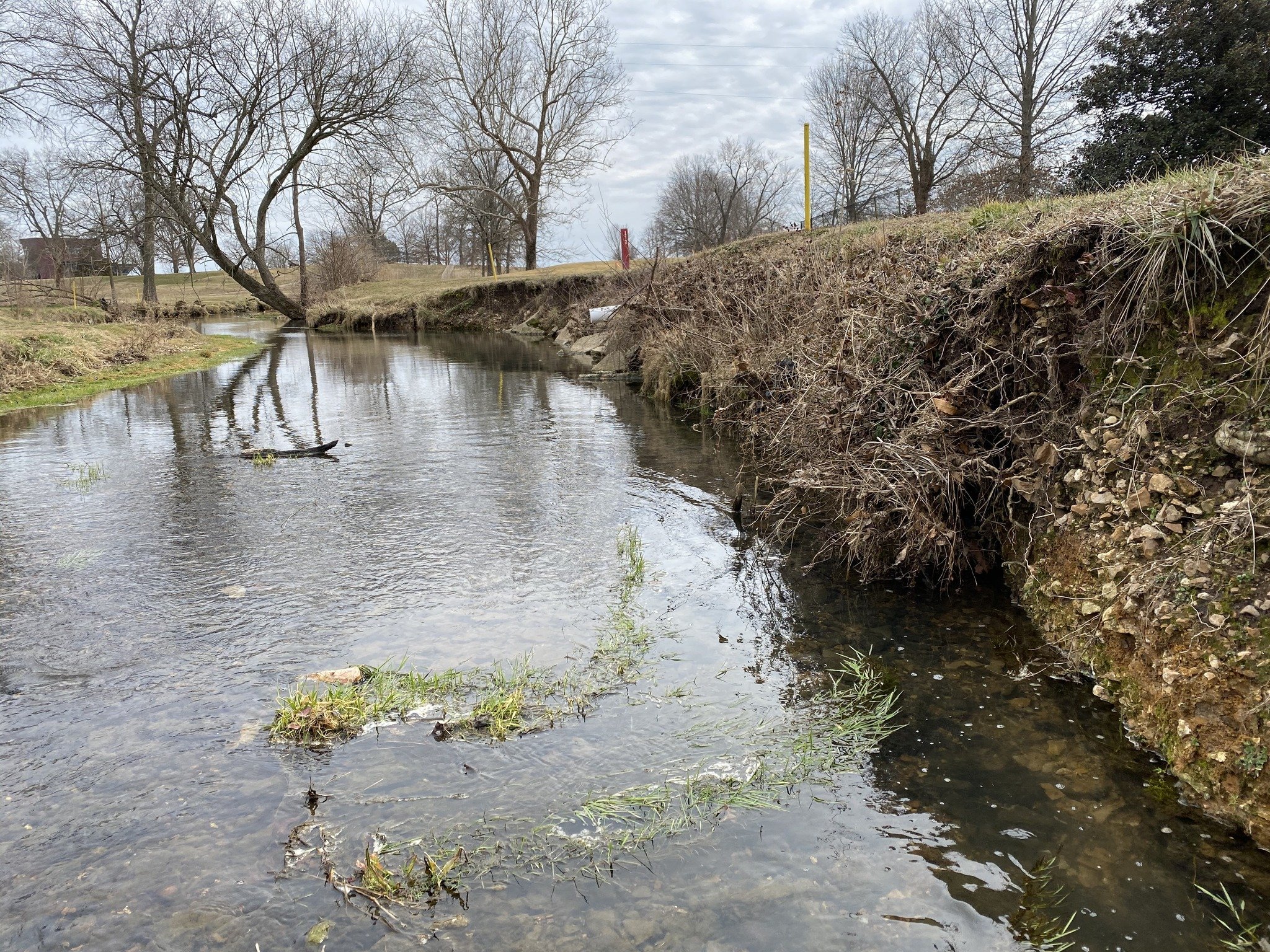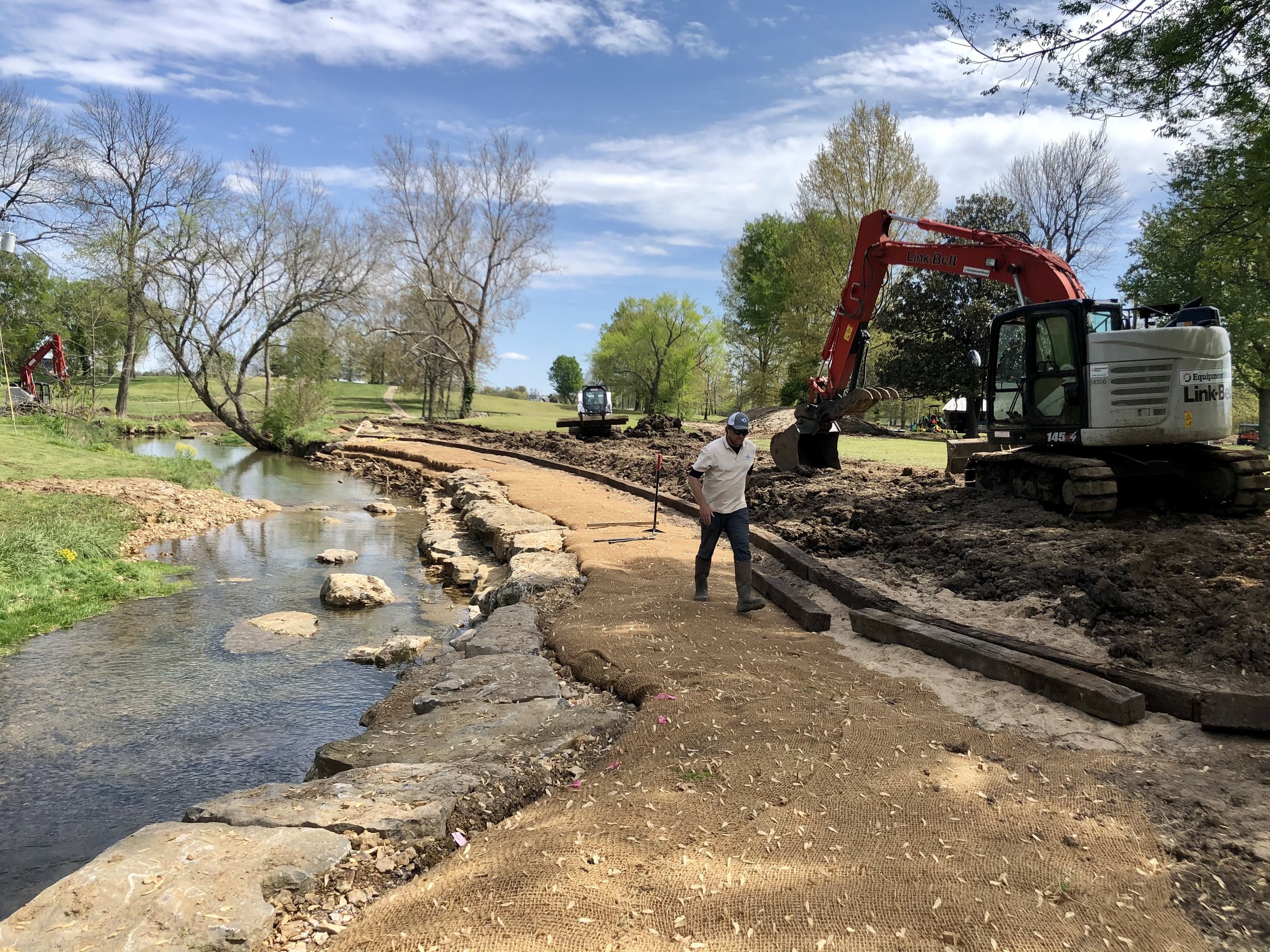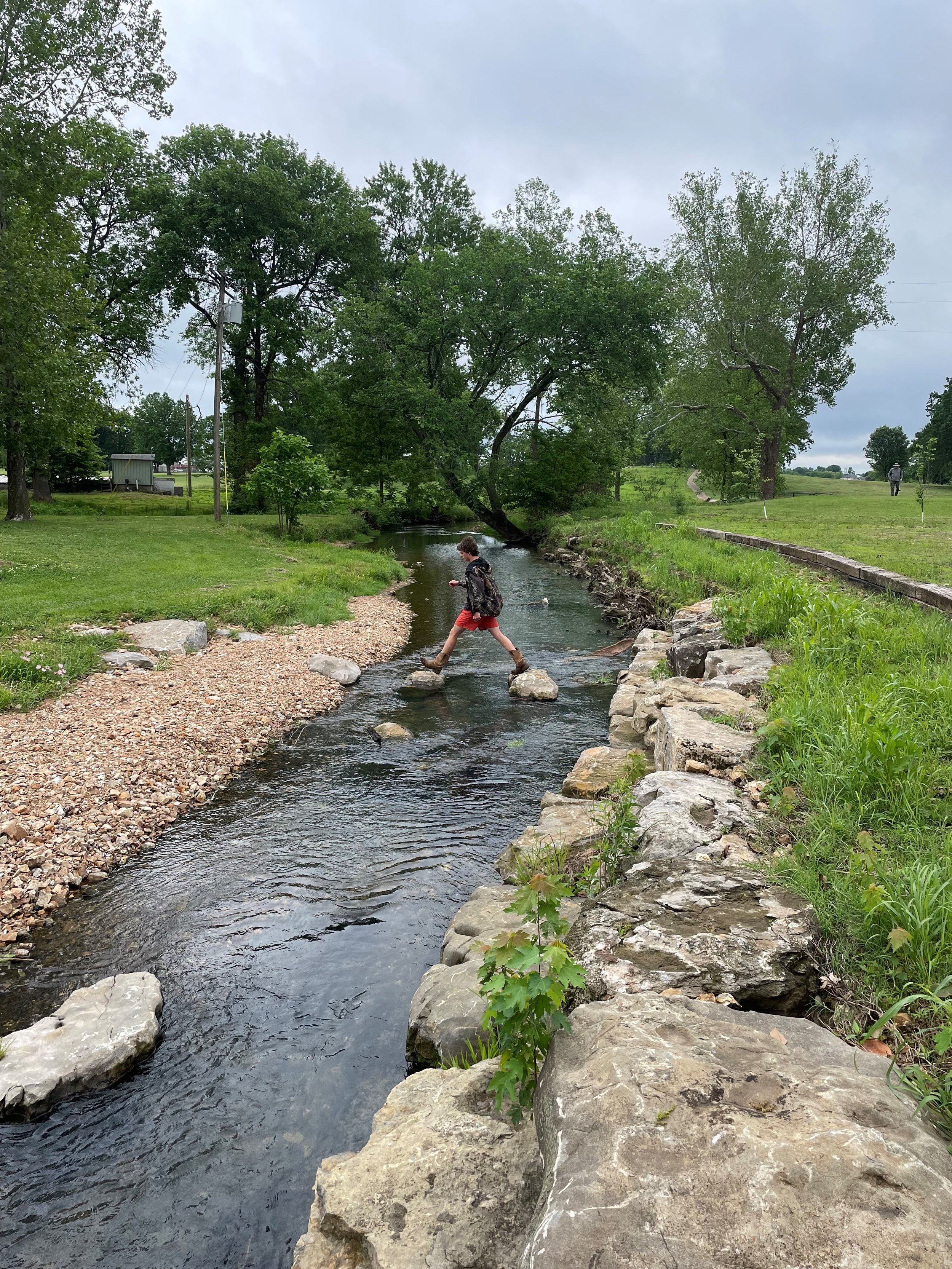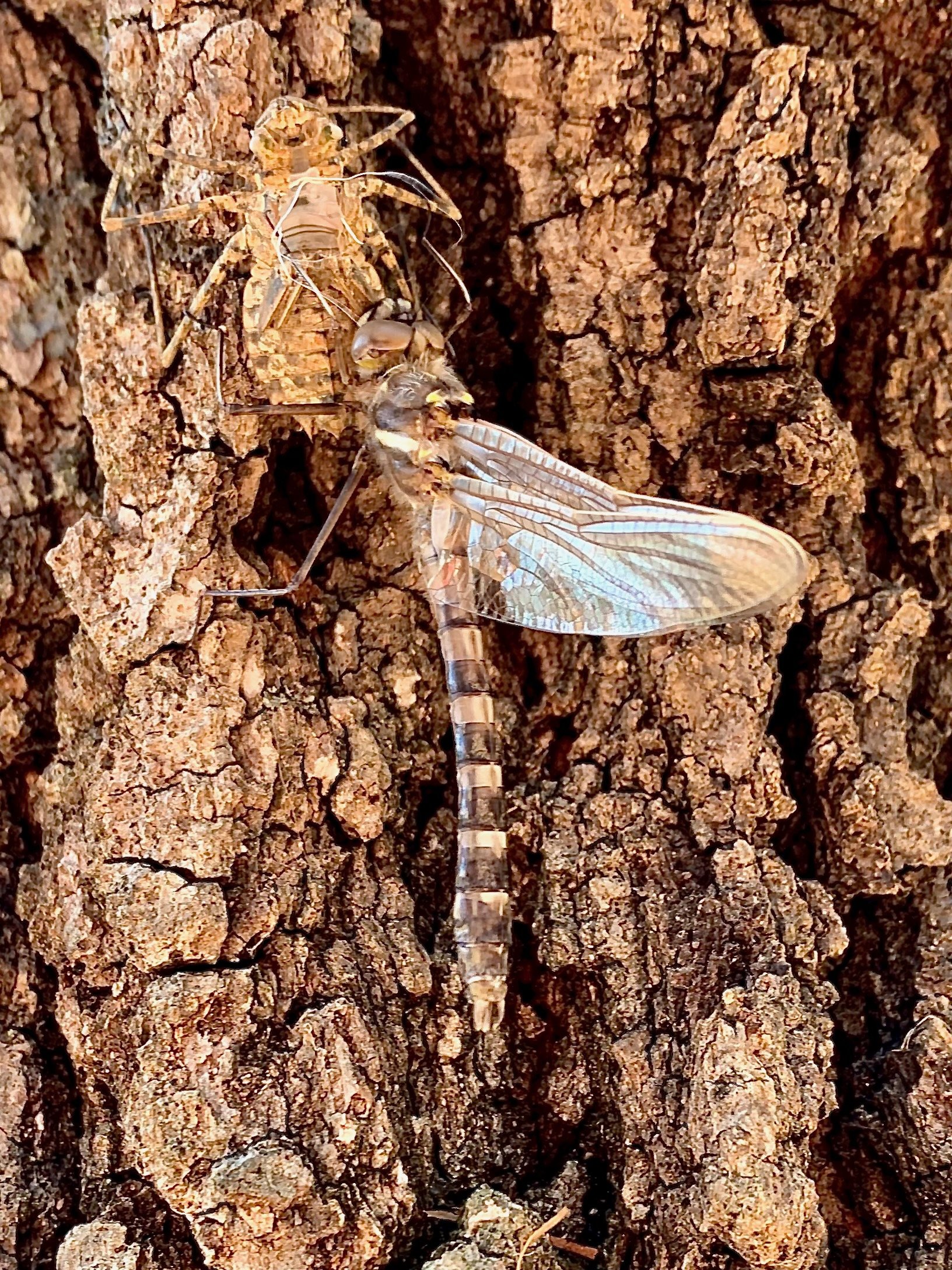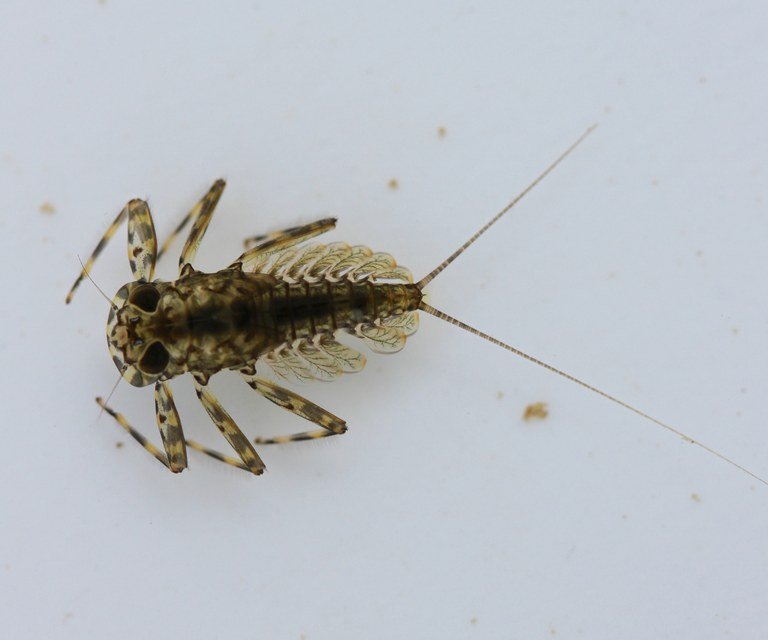Buffers of Biodiversity
During the summer of 2020, IRWP in partnership with the City of Siloam Springs broke ground on a Riparian Restoration Project at The Course at Sager’s Crossing. This project installed and expanded 4,410 linear feet of riparian buffer and added approximately 9 acres of flood plain and upland prairie to filter out pollutants and create habitat for wildlife. Construction for this project ended October of 2021. Below you can see the progression of the riparian buffer project of The Courses at Sager’s Crossing. From left to right you see before, during, and after project completion.
This site has been monitored by IRWP as part of our EcoAssessment program. The chart below shows macroinvertebrate diversity at The Courses at Sager’s Crossing in 2018, 2019, and 2022. From 2018 to 2019, macroinvertebrate diversity dropped from 19 to 14 (26%) (higher number means higher diversity). However, after completion of the streambank restoration project, diversity increased from 14 to 22 (57%).
Oftentimes, ecologists will turn their attention to the living organisms within a habitat to interpret the health of an ecosystem. In the case of water quality, we can look to organisms we call macroinvertebrates, or more commonly referred to as aquatic insects. Like us, macroinvertebrates prefer to live in a clean, healthy environment. For them this means cool, flowing water that contains abundant oxygen and a streambottom composed of a mixture of gravel, cobble stones, and boulders. This type of streambottom substrate provides macroinvertebrates with shelter from predators and places to find food. Upstream erosion events may cause excess inputs of silt and sand that fill in these critical spaces and put this habitat in jeopardy. The photo below was taken at The Course at Sager’s Crossing and is an example of a stream system exhibiting an ideal mixture of gravel, cobble stones, and boulders.
Streambottom composition also affects the diversity of macroinvertebrates by providing variety in habitat types. Diversity can be used to measure ecosystem health and high diversity will enable a habitat to be resilient to natural disturbances. In order for this diversity to be maintained, however, it is important for other aspects of the ecosystem to remain balanced. Riparian buffers, for example, help to reduce nutrient and sediment runoff into streams. They also provide valuable habitat for wildlife including birds, amphibians, and mammals, and can help to reduce erosion by stabilizing the streambank with diverse root systems. Riparian buffers protect aquatic ecosystems against natural disturbances and can preserve ecosystem health and, subsequently, macroinvertebrate diversity. Below are examples of some of the macorinvertebrate species found at The Courses at Sager’s Crossing (two different types of Mayflies (left and right) and a dragonfly emerging from its larval stage into its adult stage (center) (photo on the right from macroinvertebrates.org)).
Normally, it can take years for an ecosystem to recover from a natural disturbance. The diversity increase from 2019 to 2022 could have ocurred due to a variety of different environmental factors, however, the best management practices put into place at Sager’s Crossing can certainly aid in improving ecosystem health and water quality.

